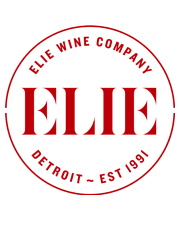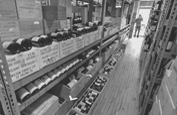Exploring the French Backcountry Along the Route of ‘Tour de France’ in Ten Stages. The ‘Tricolore’ in Red, White and Rosé. (10-Bottle Pack $291, Tax Included)
Exploring the French Backcountry Along the Route of ‘Tour de France’ in Ten Stages. The ‘Tricolore’ in Red, White and Rosé.
 The terrain is rough but the terroir is sweet! The Tour de France was founded in 1903—which, for the record, was not a bad vintage for French wine either—and aligning the Tour de France with a ‘Pour’ de France is not difficult; the annual, multi-stage bicycle race traces a serpentine route through some of the best and unexplored wine country in France. We take up the course in Stage 6 (Tours to Châteauroux), when, this year, 177 riders arrived in the ‘the Garden of France’—the heart of the Loire—then followed a circuitous course that will finish with a sparkling celebration of victory in the Parisian bosom, Champs-Élysées. The wines in this package showcase the variety of styles and substances that spring from the soils beneath the rubber tires of world’s most heralded bicycle racers.
The terrain is rough but the terroir is sweet! The Tour de France was founded in 1903—which, for the record, was not a bad vintage for French wine either—and aligning the Tour de France with a ‘Pour’ de France is not difficult; the annual, multi-stage bicycle race traces a serpentine route through some of the best and unexplored wine country in France. We take up the course in Stage 6 (Tours to Châteauroux), when, this year, 177 riders arrived in the ‘the Garden of France’—the heart of the Loire—then followed a circuitous course that will finish with a sparkling celebration of victory in the Parisian bosom, Champs-Élysées. The wines in this package showcase the variety of styles and substances that spring from the soils beneath the rubber tires of world’s most heralded bicycle racers.
Official Website of Tour de France 2021.
We are pleased to offer one bottle of each of the following ten wines for a price of $291, tax included.
STAGE 6 – Touraine, Loire – Rosé
Chinon: Chinon perches above the River Vienne in Indre-et-Loire on soils composed almost entirely of erosional scree, gravel and hard Turonian limestone. This is ideal for the production of mineral-driven reds made from Cabernet Franc, and also lends itself a small quantity of spicy rosé.
 Château de la Bonnelière ‘M Plouzeau – Rive Gauche’ 2020 ($17): Rive Gauche’ translates literally as ‘Left Bank’, and refers to the Vienne, where Château de la Bonnelière has been in the Plouzeau family since 1846. Marc Plouzeau took over in 1988 with a game plan that included lowering yields and hand-harvesting at ideal physiological ripeness. His 2020 Rosé is a crunchy delight with watermelon and strawberry notes and great overall depth that brings out elements of cantaloupe, ripe red pepper and a beguiling black cherry undercurrent adding weight and complexity.
Château de la Bonnelière ‘M Plouzeau – Rive Gauche’ 2020 ($17): Rive Gauche’ translates literally as ‘Left Bank’, and refers to the Vienne, where Château de la Bonnelière has been in the Plouzeau family since 1846. Marc Plouzeau took over in 1988 with a game plan that included lowering yields and hand-harvesting at ideal physiological ripeness. His 2020 Rosé is a crunchy delight with watermelon and strawberry notes and great overall depth that brings out elements of cantaloupe, ripe red pepper and a beguiling black cherry undercurrent adding weight and complexity.
STAGE 7 – Côte Chalonnaise, Burgundy – White
Mercurey: In Burgundy’s sub-region of Côte Chalonnaise, Mercurey is rolling patchwork of vineyards covering around 1600 acres of limestone-rich soil. Named for the Roman God Mercury, it is fitting that the AOP is known predominantly for red wines made. Yet the whites—though making up less than 10% of Mercurey’s output—are beautifully nuanced Chardonnay-based gems.
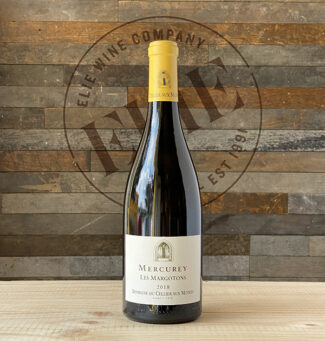 Domaine du Cellier aux Moines ‘Les Margotons’ 2018 ($31): Situated in one of Givry’s historic Premier Crus, the Cellier aux Moines was magnificently restored by Catherine and Philippe Pascal, who also expanded their offerings by purchasing several small plots of Chardonnay vines in Mercurey, including ‘Les Margotons’. The vines are grown in limestone marl and the wine has a sensuous, tropical nose replete with pineapple and papaya; it is round and rich on the palate with citrus notes and soft hazelnut on the finish.
Domaine du Cellier aux Moines ‘Les Margotons’ 2018 ($31): Situated in one of Givry’s historic Premier Crus, the Cellier aux Moines was magnificently restored by Catherine and Philippe Pascal, who also expanded their offerings by purchasing several small plots of Chardonnay vines in Mercurey, including ‘Les Margotons’. The vines are grown in limestone marl and the wine has a sensuous, tropical nose replete with pineapple and papaya; it is round and rich on the palate with citrus notes and soft hazelnut on the finish.
STAGE 8 – Jura – White
L’Étoile: A tiny appellation (130 acres) in southwestern Jura—itself a small département between Burgundy and Switzerland—L’Étoile is French for ‘the star’, likely referring to the starfish fossils found in the clay/limestone and grey/blue marne soil. This is ‘vin jaune’ country—an unusual Sherry-style wine made from the local Savagnin grape and developed using a flor-like strain of yeast.
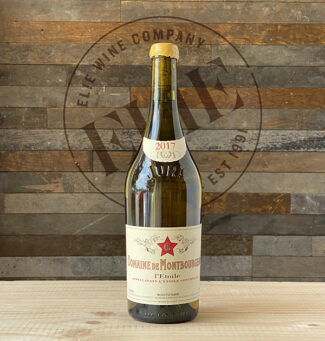 Domaine de Montbourgeau 2017 ($30): Nicole Deriaux’s grandfather planted the first Montbourgeau vines in 1920. As the current vigneron, Deriaux is dedicated to organic agriculture and vinifies according to the traditional methods of the appellation. Although it is made primarily of Chardonnay, the delightfully zesty dry wine carries vin jaune notes reminiscent of Fino: Chamomile, candied lemon peel and yeasty brioche braced by a resonant acidity.
Domaine de Montbourgeau 2017 ($30): Nicole Deriaux’s grandfather planted the first Montbourgeau vines in 1920. As the current vigneron, Deriaux is dedicated to organic agriculture and vinifies according to the traditional methods of the appellation. Although it is made primarily of Chardonnay, the delightfully zesty dry wine carries vin jaune notes reminiscent of Fino: Chamomile, candied lemon peel and yeasty brioche braced by a resonant acidity.
STAGE 10 – Northern Rhône – Red
Collines Rhodaniennes IGP: ‘IGP’ is the Europe-wide equivalent of ‘Vin de Pays’ (Country Wine), a classification that focuses on geographical origin rather than style and tradition, giving winemakers greater stylistic freedom than ‘AOP’. Collines Rhodaniennes is in the northern Rhône Valley, and covers an area from Lyon to Montélimar and includes some of southern France’s most famous AOP appellations, including Côte Rôtie, Condrieu and Hermitage.
 Stéphane Ogier ‘La Rosine – Syrah’ 2016 ($35): Having studied in Beaune, owner and winemaker Stéphane Ogierdraws from 27 acres of his family’s estate in some of the most famous Côte-Rôtie areas, such as Lancement, Côte-Rozier, and La Viallière. He produces several Syrah-based wines, including La Rosine, a full-bodied, richly-textured mouthful with caramel and mocha on the nose and brambleberries on the mid-palate, especially black raspberries and red currants.
Stéphane Ogier ‘La Rosine – Syrah’ 2016 ($35): Having studied in Beaune, owner and winemaker Stéphane Ogierdraws from 27 acres of his family’s estate in some of the most famous Côte-Rôtie areas, such as Lancement, Côte-Rozier, and La Viallière. He produces several Syrah-based wines, including La Rosine, a full-bodied, richly-textured mouthful with caramel and mocha on the nose and brambleberries on the mid-palate, especially black raspberries and red currants.
STAGE 11 – Vaucluse, Southern Rhône – Red
Vaucluse IGP: Situated in the heart of the Southern Rhône Valley, Vaucluse encompasses such fabled winegrowing villages as Châteauneuf-du-Pape, Gigondas and Vacqueyras. The IGP classification allows growers to experiment with grape varieties and winemaking techniques that fall outside of the AOP-level appellation requirements.
 Selon Frédéric & Daniel Brunier ‘Le Pigeoulet’ 2018 ($17): The brothers Frédéric & Daniel represent the fourth generation of Brunier to farm Châteauneuf-du-Pape at Domaine du Vieux Télégraphe; they produce the ‘Le Pigeoulet’ cuvée from the identical Châteauneuf-du-Pape terroir, but this wine is primarily Grenache. It shows luscious blackberries, herbs and licorice contained within a flamboyant Rhône package that balances elegance and muscle.
Selon Frédéric & Daniel Brunier ‘Le Pigeoulet’ 2018 ($17): The brothers Frédéric & Daniel represent the fourth generation of Brunier to farm Châteauneuf-du-Pape at Domaine du Vieux Télégraphe; they produce the ‘Le Pigeoulet’ cuvée from the identical Châteauneuf-du-Pape terroir, but this wine is primarily Grenache. It shows luscious blackberries, herbs and licorice contained within a flamboyant Rhône package that balances elegance and muscle.
STAGE 13 – Hérault, Languedoc – Red
Terrasses du Larzac: Among the independent subdivisions of Languedoc-Roussillon, one rising star is rapidly becoming a supernova. Having been formed in 2005 and not officially recognized until 2014, Terrasses du Larzac contains some of the highest elevations in the Languedoc—vineyard plots snake along the Cévennes range and produce wines that are notably distinct from its nearest neighbors, including those from the oldest appellation in France, Roquefort.
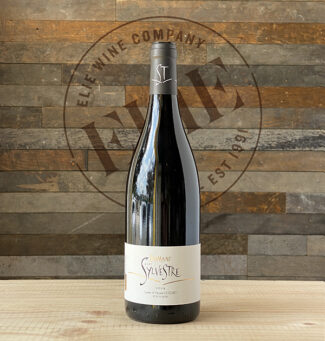 Domaine Saint Sylvestre 2014 ($33): Having launched Domaine Saint Sylvester in 2010 from a trio of lots totaling less than twenty acres, the wines quickly showcased the talent and passion of owners Sophie and Vincent Guizard. Their style of red wine presents jazzy bravura—cherries, raspberries and red currants on the nose, and mid-palate to finish it offers the peculiar herbal-ness that the French call ‘garrigue’.
Domaine Saint Sylvestre 2014 ($33): Having launched Domaine Saint Sylvester in 2010 from a trio of lots totaling less than twenty acres, the wines quickly showcased the talent and passion of owners Sophie and Vincent Guizard. Their style of red wine presents jazzy bravura—cherries, raspberries and red currants on the nose, and mid-palate to finish it offers the peculiar herbal-ness that the French call ‘garrigue’.
STAGE 14 – Aude, Roussillon – Red
Fitou: Situated in the warm core of Roussillon a few miles from the Mediterranean coast, Fitou boasts a proud winemaking tradition. The soils tend to be poor, but free draining, and the yields are small, leading to concentrated red wines built around a primary blend of Carignan and Grenache and often displaying Fitou’s characteristic herbalness and meaty rusticity.
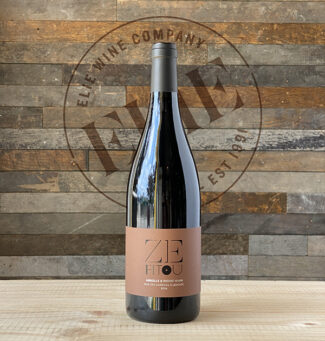 Mas des Caprices ‘Ze Fitou’ 2016 ($24): Mireille and Pierre Mann established Mas de Caprices near the seaside resort of Leucate in the Corbières Maritimes, where, the combined forces of water and wind wreak both havoc and harmony throughout the vineyards. This wine shows a supple nose of macerated fruit and game, with a full-bodied spiciness with licorice and velvety tannins.
Mas des Caprices ‘Ze Fitou’ 2016 ($24): Mireille and Pierre Mann established Mas de Caprices near the seaside resort of Leucate in the Corbières Maritimes, where, the combined forces of water and wind wreak both havoc and harmony throughout the vineyards. This wine shows a supple nose of macerated fruit and game, with a full-bodied spiciness with licorice and velvety tannins.
STAGE 15 – Pyrénées-Orientales, Roussillon – Red
Maury: Maury is an appellation in northern Roussillon best known for sweet ‘vins doux naturels’ made from Grenache. Looking for a broader audience, a separate appellation was created in 2011 to focus on dry red wines made from the same grape, with Mourvèdre, Syrah and Carignan also permitted. Maury’s terrain is dominated by steep limestone cliffs, marking the beginning of the Pyrénées foothills; vines planted at these altitudes produce some of the fullest-bodied wines in France.
 Mas Amiel ‘Alt 433 m’ 2017 ($36): As the name suggests, Mas Amiel’s most elevated vines—including those of the natural Grenache mutation known as Lladoner Pelut—are planted in 1952 on a mountain slopes composed of gneiss and micaschist. Cool nights maintain acidity, giving this sericeous wine a pristine bite and violet aromatics while warm days allow rich red fruit flavors to develop, especially black cherries, jammy strawberry and cassis along with exotic spices.
Mas Amiel ‘Alt 433 m’ 2017 ($36): As the name suggests, Mas Amiel’s most elevated vines—including those of the natural Grenache mutation known as Lladoner Pelut—are planted in 1952 on a mountain slopes composed of gneiss and micaschist. Cool nights maintain acidity, giving this sericeous wine a pristine bite and violet aromatics while warm days allow rich red fruit flavors to develop, especially black cherries, jammy strawberry and cassis along with exotic spices.
STAGE 19 – Libournais, Bordeaux – Red
Fronsac: Often called ‘the Tuscany of the Gironde’ for its spectacular hillside vineyards overlooking the gentle Dordogne and the river Isle, Fronsac lies just to the west of Saint-Émilion and Pomerol. Like its more famous neighbors, this AOP relies chiefly on Merlot, which thrives especially well in Fronsac’s ‘molasse de Fronsadais’—a subsoil composed of clay, sandstone and limestone.
 Château Villars 2015 ($25): 2015 was a fine vintage in Fronsac, with none of the late-season frost that dogged previous harvests. Château Villars’s wine shows sensational balance with a plush core of sweet mulberry, a complex mid-palate with red fruit and flowers and a slight tinge of clove on the finish along with delightfully intertwined tannins.
Château Villars 2015 ($25): 2015 was a fine vintage in Fronsac, with none of the late-season frost that dogged previous harvests. Château Villars’s wine shows sensational balance with a plush core of sweet mulberry, a complex mid-palate with red fruit and flowers and a slight tinge of clove on the finish along with delightfully intertwined tannins.
STAGE 21 – Savoie – Sparkling Rosé (Champs-Élysées – Paris)
After more than three weeks of racing, The Tour de France reaches its grand finale at the finishing line on the Avenue des Champs-Elysées on July 18th., where the coveted yellow jersey is bestowed upon the winner with much fanfare… and champagne.
For our celebration, we prefer a demi-sec sparkling rosé from the mountainous Savoie region of eastern France. Bugey Cerdon: Cerdon—one of three sub-appellations of Bugey—produces a single style of wine, and does it better than anyone else: sparkling rosés made from Gamay and Poulsard (an indigenous, thin-skinned variety). The advantage Cerdon has over much of the region is found in its hillside slopes that face south east, where early morning sunshine and free draining soils prove ideal for a slower, more consistent ripening of grapes.
 La Dentelle Demi-Sec multi-vintage ($26): There is a remarkable story behind this wine: Marcel Perinet began his career as a waiter, then became a sommelier (best in France in 1978) and rose to serve as director of 3–Michelin-starred Georges Blanc in Vonnas. After 41 years at Blanc, Perinetinherited two and a half acres of land in Cerdon du Bugey and set out to produce one of the best sparkling rosés in Savoie. Made using ‘méthode ancestrale’ (which differs from Champagne’s ‘méthode traditionelle’ in that there is no second application of yeasts or sugars during production), leaving residual sugars and alcohol at 8.5%, Perinet’s off-dry wine is wonderfully effervescent with a rich backbone of strawberry and watermelon flavors showing veins of spice and cherry.
La Dentelle Demi-Sec multi-vintage ($26): There is a remarkable story behind this wine: Marcel Perinet began his career as a waiter, then became a sommelier (best in France in 1978) and rose to serve as director of 3–Michelin-starred Georges Blanc in Vonnas. After 41 years at Blanc, Perinetinherited two and a half acres of land in Cerdon du Bugey and set out to produce one of the best sparkling rosés in Savoie. Made using ‘méthode ancestrale’ (which differs from Champagne’s ‘méthode traditionelle’ in that there is no second application of yeasts or sugars during production), leaving residual sugars and alcohol at 8.5%, Perinet’s off-dry wine is wonderfully effervescent with a rich backbone of strawberry and watermelon flavors showing veins of spice and cherry.
- - -
Posted on 2021.07.16 in Jura, Jura, Savoie, France, Bordeaux, Burgundy, Wine-Aid Packages, Languedoc-Roussillon, Loire, Southern Rhone, Northern Rhone | Read more...
White Burgundy with a Southern Accent: Soil Riches Told in Parcels in Two Mâconnais Appellations (6-Bottle Pack $277, Tax Included)
White Burgundy with a Southern Accent: Soil Riches Told in Parcels in Two Mâconnais Appellations.
The Mâconnais is the soul of southern Burgundy; it is an artist’s dreamscape of undulating hills and picturesque valleys. Extending nearly 25 miles from the Côte Chalonnaise to the Rock of Solutré, bordered on one side by the river Saône and the Grosne on the other, grape vines were first planted here in Gallo-Roman times and expanded by the powerful abbeys of Tournus and Cluny. Wines that simply bear ‘Mâcon’ on the label may be white, red, or every shade of pink so long as they hail from specific geographic boundaries and adhere to base yield regulations at harvest, but so high is the overall quality of this Burgundian sub-region that many wines made in the Mâcon qualify for higher-level appellations. There are eight AOPs in the Mâconnais; among the superlatives are the well-known Pouilly-Fuissé and the adjacent—if lesser known— Pouilly-Loché. Both Pouilly-Fuissé and Pouilly-Loché are made exclusively from Chardonnay, a variety especially suited to the region’s brown and calcic limestone. A comparison of wine from these two juxtaposed appellations gives a good overview of the differences and similarities produced by individual terroirs. Whereas the four communes of Pouilly-Fuissé (Chaintré, Fuissé, Solutré-Pouilly and Vergisson) tend to produce creamy, opulent wines, those from the satellite AOP Pouilly-Loché may be leaner and more apt to display a steely, mineral quality. And yet, when fine-tuned by lieux-dits (named-sites), hillside exposures and vintages these qualities may leapfrog from site to site with the chief consistency being found in the overall wine quality.

We are pleased to offer a selection of exceptional wines from Pouilly-Fuissé and Pouilly-Loché for an all-inclusive price of $277. It’s an ideal sampler of the complexity and depth that the two appellations have to offer. Included in this Mâconnais, an all-white 6-bottle package, are one each of the following wines:
Pouilly-Fuissé
West of the town of Mâcon, the land rises to form a series of hills; Mont de Pouilly gives the region its name, but rocky outcrops of Solutré and Vergisson play a more prominent role in the remarkable terroir of Pouilly-Fuissé. The vines are planted all around these two hills on clay-limestone soils mixed with upslope scree. Steep-sided streams give these slopes an ideal easterly or south-easterly exposure. Granted Premier Cru designation in September 2020, there are currently 22 climats entitled to wear this label: The finest Pouilly-Fuissés easily rival the best wines of the Côte de Beaune.
Domaine du Roc des Boutires
If the Mâconnais is the soul of southern Burgundy, Domaine du Roc des Boutires may be the heart. Located in the direct center of Aux Bouthières, arguably the best terroir of the appellation, Domaine du Roc des Boutires has been under the watchful eye of the Parinet family of Château du Moulin-à-Vent since 2016. The vines sit beneath the Roche de Solutré, a limestone escarpment so remarkable in appearance that locals refer to it as ‘The Sphinx of the Mâconnais’.

 Premier Cru ‘Vers Cras’ Pouilly-Fuissé 2018 ($57): Vers Cras is one of the newly-minted Premier Cru sites in Pouilly-Fuissé; the subsoil of ancient coral limestone provides a unique salty tension to the wines. This one is a classic expression of Pouilly-Fuissé with vibrant Chardonnay fruit—fresh apple, melon and peach underscored by white flowers and honeysuckle.
Premier Cru ‘Vers Cras’ Pouilly-Fuissé 2018 ($57): Vers Cras is one of the newly-minted Premier Cru sites in Pouilly-Fuissé; the subsoil of ancient coral limestone provides a unique salty tension to the wines. This one is a classic expression of Pouilly-Fuissé with vibrant Chardonnay fruit—fresh apple, melon and peach underscored by white flowers and honeysuckle.
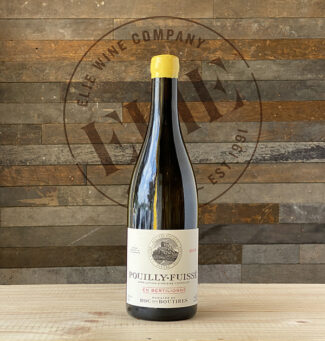
Lieu-dit ‘en Bertilionne’ Pouilly-Fuissé 2019 ($49): The lieu-dit ‘en Bertilionne’ is a scant acre and a half, but—with its shoals of marl and chalky depths—offers one of the most highly prized terroirs in the Mâconnais. Emerald gold tones reflect a wine of finesse and distinction loaded with Granny Smith apple, hazelnuts, grapefruit and lemon and a tingly, acidic and long-lasting finish.
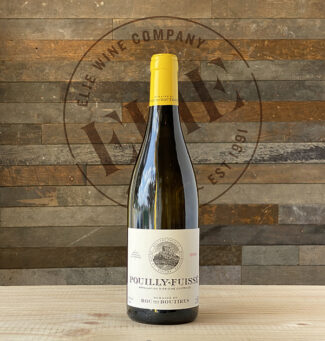
Pouilly-Fuissé 2019 ($47): Boutires’s signature cuvée is from a selection of 40 to 45-year vines in four lieux-dits: A la Roue, Barvay, aux Combes and en Bertilionne. Nervy and complex with faint jasmine in the bouquet and green almond on the palate, this supple wine is also infused with lime, grapefruit, and honey and complemented by damp-stone minerality.
Pouilly-Loché
Pouilly-Loché produces some of the finest Mâconnais wines made, and may owe its relative lack of notoriety to the fact that so little of it is available. Covering a scant 80 acres across vineyards sited between 650-820ft., the top wines of Loché come from east-facing hillside overlooking the Saône Valley. Despite its size, a variety of soils can be found in these vineyards; north of the village of Loché, the soil is mostly schists and sandstone, allowing for a quick morning warm-up. South of Loché, iron dominates clay soil and the terroir resembles the third, (perhaps better known Pouilly), Pouilly-Vinzelles. Since no formal ‘Premier Cru’ system exists within Pouilly-Loché, quality is determined by reputation of the vineyard, and especially by specific lieux-dits within those vineyards.
Domaine du Clos des Rocs
A big fish in a little pond, nearly 30% of the vines in Pouilly-Loché belongs to Clos des Rocs. Olivier Giroux, who bought the estate in 2002, is Mâconnaise by birth, but trained in the Rhône: He claims, as a notable difference between the two regions, that the vast majority of Rhône growers never talk about their soil. “Here in Burgundy, the idea of terroir is much more developed. We love to find and market differences in character between the vineyards. I consider myself a peasant who wears many hats: It is just me here. I tend the vineyards. I make the wine. I take care of the marketing.”

 Lieu-dit ‘Clos Monopole’ Pouilly-Loché 2017 ($40): A true ‘vin de garde’, the estate’s signature wine and the appellation’s only monopole presents an intense silex-dominated structure countered by bright aromatics of orchard fruit and acacia blossoms. Likewise, the flinty acidity is fully balanced by vanilla-perfumed oak and persistent petrichor on the finish.
Lieu-dit ‘Clos Monopole’ Pouilly-Loché 2017 ($40): A true ‘vin de garde’, the estate’s signature wine and the appellation’s only monopole presents an intense silex-dominated structure countered by bright aromatics of orchard fruit and acacia blossoms. Likewise, the flinty acidity is fully balanced by vanilla-perfumed oak and persistent petrichor on the finish.
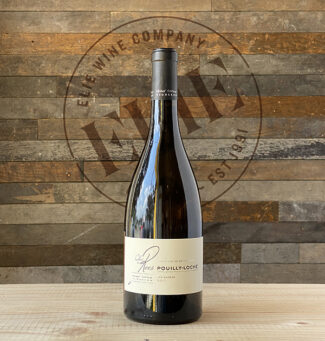 Lieu-dit ‘Les Mûres’ Pouilly-Loché 2017 ($37): The 40-year vines and limestone-rich soil of ‘Les Mûres’ makes it one of the appellation’s more sought after lieux-dits; this silken example shows Bosc pear, pineapple, kiwi and buttery cream.
Lieu-dit ‘Les Mûres’ Pouilly-Loché 2017 ($37): The 40-year vines and limestone-rich soil of ‘Les Mûres’ makes it one of the appellation’s more sought after lieux-dits; this silken example shows Bosc pear, pineapple, kiwi and buttery cream.
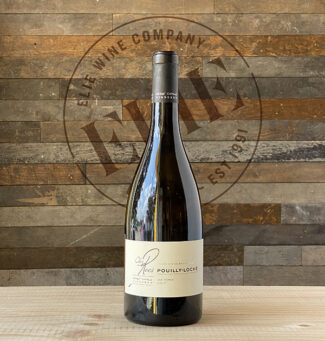 Lieu-dit ‘Les Barres’ Pouilly-Loché 2017 ($31): The estate’s smallest production (under 300 cases), ‘Les Barres’ is a cuvée from two parcels of vines between 30 and 70 years old. This crunchy and luscious up front with a beautiful buttered brioche middle palate brightened with green pear, ripe peach, honeysuckle and apple blossom which lasts to the finish.
Lieu-dit ‘Les Barres’ Pouilly-Loché 2017 ($31): The estate’s smallest production (under 300 cases), ‘Les Barres’ is a cuvée from two parcels of vines between 30 and 70 years old. This crunchy and luscious up front with a beautiful buttered brioche middle palate brightened with green pear, ripe peach, honeysuckle and apple blossom which lasts to the finish.
- - -
Posted on 2021.07.08 in France, Burgundy, Wine-Aid Packages | Read more...
The French Rosé Climate Divide: Northern (Oceanic) vs. Southern (Mediterranean) in Six Types by Six Producers. (12-Bottle Pack $255, Tax Included)
Tastes in wine run hot and cold and so do the climates that produce them. Nearly every commercial vine on earth is grown between 30° – 50° latitude (both north and south), but that range offers an almost endless array of rainfall patterns, cloud covers and wind configurations and such a wide spectrum of environments and that generalization seems pointless. And yet, anyone qualified to blind taste with authority should be able to tell you very quickly whether the wine comes from cool or warm region simply by gauging the character of the fruit. In cool climates, where budding occurs late and frosts arrive early, even grapes harvested at optimal ripeness tend to produce lighter, more acidic wines with flavor profiles that lean toward savory herbs and acidic fruits like cranberries and tart cherries. In fact, you’ll find these types of descriptors used for wines made from any number of varieties that have adapted to cooler climates. In contrast, warm weather and extended growing seasons in the world’s southerly vineyards results in jammier, richer wines with less acidity and darker fruit flavors (blackberry and plum), often underscored with exotic aromatics like coffee and chocolate.
Nowhere is this climate divide more obvious than in France, and no style of wine demonstrates it better than French rosé, a wine with many guises. A versatile food wine and a cherished part of French viticulture, crisp, cheerful rosé is produced both in France’s frosty north and sultry south with characteristically different, yet equally spectacular results.
This package, with dozen bottles ($255, all inclusive), contains selections from six of France’s most highly regarded rosé-producing regions. It represents the spectrum of hues and flavors that mark the climatic influence, as well as the common essence of the dry French ‘rosé style’ that makes it the quasi-official wine of summer.
The Loire Valley
(Northern France)

Chinon
At the western edge of the Touraine district, on a tributary of the Loire, Chinon’s vineyards drape the steep banks of the Vienne, traveling northwest to the Loire itself. The soil is mostly erosional scree and gravels on top of hard Turonian limestone. Chinon’s focus has traditionally been on racy red wines made from Cabernet Franc, although up to 25% of Cabernet Sauvignon is permitted. For centuries they have also produced a wonderful rosé from these same grapes; wines that often display a similar spiced-fruit character in a lighter, more refreshingly acidic package.
 Château de la Bonnelière ‘M Plouzeau – Rive Gauche’: ‘Rive Gauche’ translates literally as ‘Left Bank’, and here, of course, refers not to the Seine in Paris but to the Vienne in Loire. Château de la Bonnelière has been in the Plouzeau family since 1846; Marc Plouzeau took over in 1988 with a game plan that included lowering yields and hand-harvesting at ideal physiological ripeness. His vinification philosophy emphasizes fruit rather than tannins—ideal for the production of rosé. Likewise, the estate’s Argilo-Calcaire soil, with sun-reflecting flint on the surface and plenty of limestone underneath, produces wines of great complexity. Plouzeau refers to his terroir as ‘privileged.’ Château de la Bonnelière, 2020 Chinon Rosé ($17) is a crunchy delight, with watermelon and strawberry notes and great overall depth bringing out elements of cantaloupe, ripe red pepper and a beguiling black cherry undercurrent that adds weight and depth.
Château de la Bonnelière ‘M Plouzeau – Rive Gauche’: ‘Rive Gauche’ translates literally as ‘Left Bank’, and here, of course, refers not to the Seine in Paris but to the Vienne in Loire. Château de la Bonnelière has been in the Plouzeau family since 1846; Marc Plouzeau took over in 1988 with a game plan that included lowering yields and hand-harvesting at ideal physiological ripeness. His vinification philosophy emphasizes fruit rather than tannins—ideal for the production of rosé. Likewise, the estate’s Argilo-Calcaire soil, with sun-reflecting flint on the surface and plenty of limestone underneath, produces wines of great complexity. Plouzeau refers to his terroir as ‘privileged.’ Château de la Bonnelière, 2020 Chinon Rosé ($17) is a crunchy delight, with watermelon and strawberry notes and great overall depth bringing out elements of cantaloupe, ripe red pepper and a beguiling black cherry undercurrent that adds weight and depth.
Bourgueil
Having grown and produced Cabernet Franc wines at the Abbey de Bourgueil for more than a thousand years, Bourgueil may well claim the title of the variety’s birthplace. Situated on the right bank of the Loire, Bourgueil shares a terroir with Chinon, being mostly sand, gravel and limestone, although Bourgueil wines are known to mature longer in cellar, sharing an age-worthiness comparable to wines from the Médoc. The entire AOP is less than three thousand acres in total, and produces only scant amounts of rosé—it represents less than 5% of their output—but it is noted for its peppery elegance and general affordability.
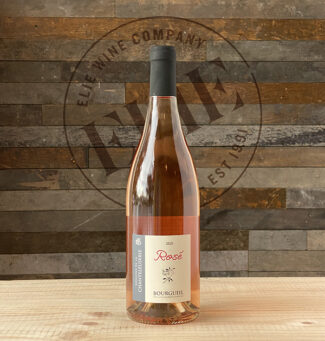 Domaine de la Chanteleuserie: Seven generations of winemakers have graced this beautifully-named vineyard (‘Chanteleuserie’ means ‘the place where the lark sings’). Currently coaxing gems from limestone-clay and chalky, porous tuffeau is winemaker Thierry Boucard, who keeps the yields from his south-facing vines low and preserves the freshness and acidity by careful temperature control. Domaine de la Chanteleuserie, 2020 Bourgueil Rosé ($16) hails from 35-year-old vines grown in siliceous clay; it is perfectly balanced with red fruit and earthy terroir, displaying lush strawberry/raspberry aromas with lots of citrus notes, pink grapefruit being the easiest to isolate and the one that carries through a full and tart finish.
Domaine de la Chanteleuserie: Seven generations of winemakers have graced this beautifully-named vineyard (‘Chanteleuserie’ means ‘the place where the lark sings’). Currently coaxing gems from limestone-clay and chalky, porous tuffeau is winemaker Thierry Boucard, who keeps the yields from his south-facing vines low and preserves the freshness and acidity by careful temperature control. Domaine de la Chanteleuserie, 2020 Bourgueil Rosé ($16) hails from 35-year-old vines grown in siliceous clay; it is perfectly balanced with red fruit and earthy terroir, displaying lush strawberry/raspberry aromas with lots of citrus notes, pink grapefruit being the easiest to isolate and the one that carries through a full and tart finish.
Coteaux du Giennois
The vineyards of Giennois follow a sort of geometric ribbon along the limestone slopes of the Loire, encompassing 14 communes as they pass through the ancient river terraces of Gien and extensions of the geological formations of Sancerre and Pouilly-Fumé. Giennois is predominately known as a white-wine AOP, with reds (and pinks) being made in lesser amounts from Gamay and Pinot Noir.
 Clément & Florian Berthier: A babe in arms compared to the ancient standards of Loire, the winery was founded in 1983 by Jean-Marie Berthier and is today managed by Jean-Marie’s sons, Clément and Florian. Both have wine pedigrees spanning the old world and the new, perhaps most notably in Oregon’s Willamette Valley, where some of the world’s compelling Pinot Noir rosé is produced. Delicate, crisp and vibrant, Clement & Florian Berthier, 2020 Coteaux du Giennois Rosé ($18) shows white raspberry and mandarin orange and a long, tangy mouthfeel.
Clément & Florian Berthier: A babe in arms compared to the ancient standards of Loire, the winery was founded in 1983 by Jean-Marie Berthier and is today managed by Jean-Marie’s sons, Clément and Florian. Both have wine pedigrees spanning the old world and the new, perhaps most notably in Oregon’s Willamette Valley, where some of the world’s compelling Pinot Noir rosé is produced. Delicate, crisp and vibrant, Clement & Florian Berthier, 2020 Coteaux du Giennois Rosé ($18) shows white raspberry and mandarin orange and a long, tangy mouthfeel.
Provence & Languedoc-Roussillon
(Southern France)

Côtes de Provence
The massive Côtes de Provence sprawls over 50,000 acres and incorporates a patchwork of terroirs, each with its own geological and climatic personality. The northwest portion is built from alternating sub-alpine hills and erosion-sculpted limestone ridges while to the east, and facing the sea, are the volcanic Maures and Tanneron mountains. The majority of Provençal vineyards are turned over to rosé production, which it has been making since 600 B.C. when the Ancient Greeks founded Marseille.
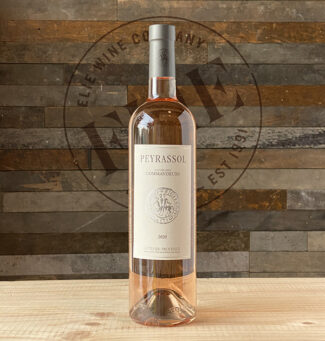 Château Peyrassol: Though they’ve been in the wine business for 800 years, it wasn’t until the 1970s that Château Peyrassol made a diva’s entrance on the world’s wine stage. The wit, cellar skills, gregarious charm and hospitality of winemaker Françoise Rigord, ‘La Dame de Peyrassol’, quickly became the stuff of legend. Today the winery is managed by Alban Cacaret, who continues ‘La Dame’s’ commitment to quality, a sense of place, of great energy and traditional Provençal open arms. Château Peyrassol ‘Cuvée des Commandeurs’, 2020 Côtes de Provence Rosé ($25): Harvested at night to preserve the acidity and placed in double-floor boxes to prevent any early maceration and coloration of the juice, this beautiful blend is intensely aromatic, showing gooseberry, crushed raspberries and orange zest wrapped around a shivery, acidic backbone.
Château Peyrassol: Though they’ve been in the wine business for 800 years, it wasn’t until the 1970s that Château Peyrassol made a diva’s entrance on the world’s wine stage. The wit, cellar skills, gregarious charm and hospitality of winemaker Françoise Rigord, ‘La Dame de Peyrassol’, quickly became the stuff of legend. Today the winery is managed by Alban Cacaret, who continues ‘La Dame’s’ commitment to quality, a sense of place, of great energy and traditional Provençal open arms. Château Peyrassol ‘Cuvée des Commandeurs’, 2020 Côtes de Provence Rosé ($25): Harvested at night to preserve the acidity and placed in double-floor boxes to prevent any early maceration and coloration of the juice, this beautiful blend is intensely aromatic, showing gooseberry, crushed raspberries and orange zest wrapped around a shivery, acidic backbone.
Bandol
Like the Côtes, Bandol is an AOP within the greater Provence appellation, but unlike the Côtes, Bandol is relatively small, covering fewer than 4000 acres. Rosé represents about a third of Bandol’s wine production, and—like the reds—they are generally a blend of Mourvèdre, Grenache and Cinsault. Protected from the north winds by the Montagne Sainte-Victoire and the Massif de la Sainte-Baume to the north and the Chaîne de Saint-Cyr to the west, Bandol offers growing conditions suited to extra ripeness, greater fruit weight and structure in the rosé. Attesting to the refreshing quality of these blush wines, Alexandre Dumas portrayed his Count of Monte Cristo as enjoying a glass of Bandol rosé ‘bien frais.’
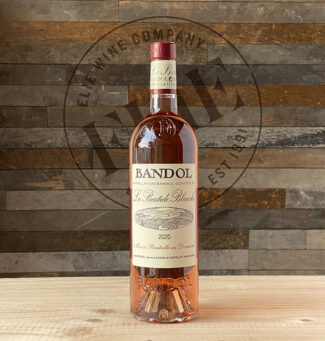 Domaine La Bastide Blanche: Michel and Louis Bronzo purchased Bastide Blanche in the ‘70s in the belief that the terroir could produce a wine to rival those of Châteauneuf-du-Pape. With that in mind, the brothers planted Carignan, Cinsault, Clairette, Grenache, Mourvèdre and Syrah. Vintage 1993 proved to be their breakaway year, putting both Bandol and themselves on the wine map. The estate is located in the foothills of Sainte-Baume Mountain, five miles from the Mediterranean Sea on land that is primarily limestone scree. La Bastide Blanche, 2020 Bandol Rosé ($27) is a three-variety blend where the Mourvèdre is pressed directly and Grenache and Cinsault are allowed to macerate for 24 hours. The final cuvée is assembled the January following harvest, proving an intense nose of peach and pomegranate that leads to a silky middle palate and a long finish filled with stone and zesty lime.
Domaine La Bastide Blanche: Michel and Louis Bronzo purchased Bastide Blanche in the ‘70s in the belief that the terroir could produce a wine to rival those of Châteauneuf-du-Pape. With that in mind, the brothers planted Carignan, Cinsault, Clairette, Grenache, Mourvèdre and Syrah. Vintage 1993 proved to be their breakaway year, putting both Bandol and themselves on the wine map. The estate is located in the foothills of Sainte-Baume Mountain, five miles from the Mediterranean Sea on land that is primarily limestone scree. La Bastide Blanche, 2020 Bandol Rosé ($27) is a three-variety blend where the Mourvèdre is pressed directly and Grenache and Cinsault are allowed to macerate for 24 hours. The final cuvée is assembled the January following harvest, proving an intense nose of peach and pomegranate that leads to a silky middle palate and a long finish filled with stone and zesty lime.
Corbières
Corbières is one of the most productive wine-producing regions in Languedoc-Roussillon. With more than 2000 growers, 300 private wine producers, and over 30 cooperatives, the annual output of wine is over 73 million bottles; roughly that of Oregon. Most of the output is red, rustic, and filled with southern spice, made from Grenache, Syrah, Mourvèdre, Lladoner Pelut and Carignan. But Rosé Corbières has gained an international reputation for quality. Corbières is a pastiche of soils and subsoils—volcanic upheavals have exposed layers from many geological periods, and 11 unique terroirs have been identified.
 Domaine de Fontsainte: Bruno Laboucarié’s mission at Fontsainte is as basic as it is complex: “To showcase nature’s generosity and to work with her in a sustainable way while respecting her capriciousness.” This means viewing the land through the eyes of his ancestors, avoiding their pitfalls, and beyond that, finding authentic inspiration in the terroir to meet changes in consumers’ tastes. ‘Gris de Gris’, 2020 Corbières Rosé ($17) is made primarily from Grenache Gris and Grenache Noir with smaller additions of Mourvèdre, Carignan and Cinsault. The result is lively and sharply focused with fresh strawberry, peach and floral scents and a touch of dusty minerals; it closes brisk and stony with a subtle floral note that linger with magnificent persistency.
Domaine de Fontsainte: Bruno Laboucarié’s mission at Fontsainte is as basic as it is complex: “To showcase nature’s generosity and to work with her in a sustainable way while respecting her capriciousness.” This means viewing the land through the eyes of his ancestors, avoiding their pitfalls, and beyond that, finding authentic inspiration in the terroir to meet changes in consumers’ tastes. ‘Gris de Gris’, 2020 Corbières Rosé ($17) is made primarily from Grenache Gris and Grenache Noir with smaller additions of Mourvèdre, Carignan and Cinsault. The result is lively and sharply focused with fresh strawberry, peach and floral scents and a touch of dusty minerals; it closes brisk and stony with a subtle floral note that linger with magnificent persistency.
- - -
Posted on 2021.07.02 in France, Wine-Aid Packages, Languedoc-Roussillon, Loire, Provence | Read more...
In the Cradle of Malbec: The Wines of Cahors’ Top Producer in Four Notes. (8-Bottle Pack $280, Tax Included)
The Cahors AOP was created exclusively for red wines crafted from Malbec grapes, and unlike much of Southern France (where many grape varieties equate to a multitude of styles) Cahors has largely remained a one-trick pony, fully capable of elevating its pony to sensational heights. Law permits Tannat and Merlot in measured quantities, but only to shore up wine structure and to add a bit of spicy softness. Malbec—here called ‘Auxerrois’—must make up at least 70% of any blend. Cabernet Sauvignon is neither allowed nor needed; the viticultural area of Cahors is situated along a tightly meandering section of the Lot River where the climate is both warmer and drier than in Bordeaux, allowing Malbec to reach full phenolic ripeness. When Jérémy Arnaud took over the Cahors winegrowers’ association ‘Union Interprofessionelle du Vin de Cahors’ in 2006, he discovered three distinct styles being produced in Cahors and turned them into a successful, if unofficial, marketing tool: The basic tier (‘Tradition’) is unoaked wine containing up to 85% Malbec, with lesser contributions from Merlot and Tannat. ‘Puissants et Gourmands’ is 85%–100% Malbec, generally aged in older oak, with corresponding flavors drawn more from the fruit than the barrel. The top of the pyramid, ‘Intenses et Complexes’, is pure Malbec aged in oak of various sizes and ages.

Château du Cèdre
Ninety minutes east of Bordeaux’s famed Garonne River and at equal distances from the Atlantic, the Mediterranean and the Pyrenees, Château du Cèdre sits on a triad of terroirs, each capable of producing distinct and idiosyncratic Cahors wines. Founded in 1973 by Léon Verhaeghe, the estate nestles within a microclimate that enjoys an Atlantic-influence maritime climate through June, then shifts to a Mediterranean climate throughout the ripening season. Elevation also helps—Château du Cèdre has planted vines to the highest elevations in Cahors. In 1988, due to health concerns, Léon’s son Charles turned the operation over to his own sons Pascal and Jean-Marc, who have introduced a number of contemporary philosophies to a domain they quickly realized was without parallel in Cahors.
 Says Pascal, who studied viticulture and winemaking both in Burgundy and in Napa: “Our 27 hectares are divided into three islets on two of the best types of soils in the appellation, notably the famous third terrace. One is clay-limestone, located on a cone of limestone scree, so it is very stony and gives wines of great finesse. The other is pebbles mixed with reddish sands, silicas and clays, suitable for the most powerful of the Cahors.”
Says Pascal, who studied viticulture and winemaking both in Burgundy and in Napa: “Our 27 hectares are divided into three islets on two of the best types of soils in the appellation, notably the famous third terrace. One is clay-limestone, located on a cone of limestone scree, so it is very stony and gives wines of great finesse. The other is pebbles mixed with reddish sands, silicas and clays, suitable for the most powerful of the Cahors.”
Indeed, Château du Cèdre is widely regarded not only as the most reliable estate in Cahors, but one of the most innovative—a dynamic that has been helped along by Pascal’s sons Jules and Robin, who have joined the family business. Recognizing that the traditional chemicals used in viticulture likely contributed to their father’s early death, Pascal and Jean-Marc began to move away from artificial pesticides and fertilizers from the moment they took over the estate.
Château du Cèdre 8-Bottle Pack $280 (tax included) contains two of each of the following four wines:
 2014 Cahors – ‘Le Cèdre’ ($54) Pascal Verhaeghe refers to 2014 as ‘a classical vintage’, meaning it was neither too hot or too cold, too wet or too dry. A gentle September allowed a long maturation period for grapes on the vine, and this classical vintage produced a classical Cahors, fully ripe and brimming with black plum and wild raspberry, complex and mature with saddle leather, grilled mushrooms and hints of earth. 100% Malbec, the tannins have softened, but still lend structure and the wine retains a nice lift of acidity.
2014 Cahors – ‘Le Cèdre’ ($54) Pascal Verhaeghe refers to 2014 as ‘a classical vintage’, meaning it was neither too hot or too cold, too wet or too dry. A gentle September allowed a long maturation period for grapes on the vine, and this classical vintage produced a classical Cahors, fully ripe and brimming with black plum and wild raspberry, complex and mature with saddle leather, grilled mushrooms and hints of earth. 100% Malbec, the tannins have softened, but still lend structure and the wine retains a nice lift of acidity.
 2018 Cahors – ‘Cèdre Héritage” ($18) A richly textured wine, mostly Malbec with a bit of Merlot in the blend providing mocha and plum, but there is an undercurrent of complexity that offers charry toast and a warming, smooth and a sensational mouthfeel almost like caramel. There are dark and smoky aromas of baked berry, licorice and minty menthol burrowing beneath the surface, and a good base of acidity to leave the palate clean.
2018 Cahors – ‘Cèdre Héritage” ($18) A richly textured wine, mostly Malbec with a bit of Merlot in the blend providing mocha and plum, but there is an undercurrent of complexity that offers charry toast and a warming, smooth and a sensational mouthfeel almost like caramel. There are dark and smoky aromas of baked berry, licorice and minty menthol burrowing beneath the surface, and a good base of acidity to leave the palate clean.
• • • Natural Wine vs. Organic Wine • • •
Château du Cèdre was Certified Organic in 2012, and since then has worked aggressively and diligently to also eliminate additives from their process. All wines from the estate are fermented with indigenous yeasts and sulfur is kept to an absolute minimum. In 2014 they created the ‘Extra Libre’ label: Natural Wine with no added sulfur at all. Château du Cèdre now produces three natural wines, each with a direct parallel to an estate wine. These wines are made from the same parcels of fruit as the regular selection, and then matured on lees in large oak casks for 12 months, 18 months and 24 months respectively—all without sulfur. Pascal considers them a triumph in the category of Natural Wine, and sulfur-free wines now make up about half of the estates production. “Personally,” says Pascal, “what I enjoy is a matter of mood; on some occasions I crave an all-natural wine, and on others, I am more tolerant of small amounts of sulfite. One thing I can say through experience, though: Although natural wines from Cahors may age differently from the rest, ours have the body and the tannic structure to improve for eight, perhaps ten years. But in their youth, these wines are extremely approachable and full of ripe, exuberant fruit.”
 2018 Cahors ($29) (Organic)Judicious use of sulfur dioxide leads to a solid, quintessential Cahors; aged on lees in 500-liter barrels and larger size foudres, the wine is allowed to evolve freely under ideal temperature and humidity. It is an assertive mouthful with blackberry cobbler and dusty earth notes, lightly oaked, with a touch of black pepper and vanilla on the finish.
2018 Cahors ($29) (Organic)Judicious use of sulfur dioxide leads to a solid, quintessential Cahors; aged on lees in 500-liter barrels and larger size foudres, the wine is allowed to evolve freely under ideal temperature and humidity. It is an assertive mouthful with blackberry cobbler and dusty earth notes, lightly oaked, with a touch of black pepper and vanilla on the finish.
• • • vs. • • •
 2019 Cahors – ‘Extra Libre’ – Élevé 12 Mois – ($31) (Natural) The same cépage is used in ‘Extra Libre’ as was used in Cahors 2018, only this one is sulfur-free. Pascal recommends drinking his Vins Naturels anywhere from within two months of release to as much as a decade of cellaring, but in its youth, he promises, this wine will express genuine freshness behind a solid core of bramble fruit, cassis, truffles, dark chocolate and spice.
2019 Cahors – ‘Extra Libre’ – Élevé 12 Mois – ($31) (Natural) The same cépage is used in ‘Extra Libre’ as was used in Cahors 2018, only this one is sulfur-free. Pascal recommends drinking his Vins Naturels anywhere from within two months of release to as much as a decade of cellaring, but in its youth, he promises, this wine will express genuine freshness behind a solid core of bramble fruit, cassis, truffles, dark chocolate and spice.
- - -
Posted on 2021.06.29 in France, South West | Read more...
Bloomsday Commemoration: Beaune Odyssey in Six Premier Crus (Father’s Day 6-Bottle Pack $299, Tax Included)
“Glowing wine on his palate lingered swallowed. Crushing in the winepress grapes of Burgundy. Sun’s heat it is. Seems to a secret touch telling me memory. Touched his sense moistened remembered. Hidden under wild ferns on Howth below us bay sleeping: sky. No sound. The sky… O wonder! Coolsoft with ointments her hand touched me, caressed: her eyes upon me did not turn away. Ravished over her I lay, full lips full open, kissed her mouth. Yum…. She kissed me. I was kissed. All yielding she tossed my hair. Kissed, she kissed me.” – James Joyce, ‘Ulysses’
In the Roaring Twenties, such literary eroticism had its price: ‘Ulysses’ was banned in the United States from 1922 (the year it was published) to 1933, a period of time that roughly mirrors Prohibition. James Joyce’s iconic novel follows—in minute and exhilarating detail—three Dubliners as they meander through the course of a single day, June 16, 1904, and is today considered one of the most important works of literature ever composed.
 Much of the action in ‘Ulysses’ takes place in pubs, where Leopold Bloom—the novel’s main protagonist—shows a particular penchant for Burgundy. In a passage that made the very real ‘Davy Byrne’s Pub’ famous, Bloom orders a Gorgonzola sandwich along with his customary glass of Burgundy.
Much of the action in ‘Ulysses’ takes place in pubs, where Leopold Bloom—the novel’s main protagonist—shows a particular penchant for Burgundy. In a passage that made the very real ‘Davy Byrne’s Pub’ famous, Bloom orders a Gorgonzola sandwich along with his customary glass of Burgundy.
We won’t sell you cheese or bread, because we’re a wine shop. But while Joyce fans across the globe celebrate ‘Bloomsday 2021’ by marathon Joyce readings, pub crawls and bubbly walks through Dublin, we’ll take you on a symbolic stroll along the ancient Route de Bouze, which divides Beaune into two distinct sub-regions, North and South.
We are pleased to offer one bottle of each of the following six wines for an inclusive price of $299. Happy Father’s Day.
• • • • SOUTH • • • •
Domaine Claudie Jobard ‘Gabriel Billard’
Claudie Jobard’s mother is considered one of the top oenologists in France and her father was a ‘pépiniériste viticole’ descended from generations of Burgundian vine growing experts. With a pedigree that illustrious, one expects great things from Claudie, the 8th generation in her family to work in wine. The domain was created by Claudie’s parents in the 1970s and named for her maternal grandfather, but prior to 2004, ‘Gabriel Billard’ was sold exclusively to négociants. It was Claudie’s influence that brought these wines directly to the public, under a winemaking principal that she refers to as ‘la lutte raisonnée’, or ‘the reasoned struggle’ which is conscientious organic farming without the stricture of official certification rules.
 Beaune Premier Cru “Les Epenotes” – Jobard 2014 ($38): The ‘climat’ of Les Epenotes derives its name from ‘épine’—a reference to the thorn-shrubs that once grew here. The wine displays a supple, pretty nose replete with dried cherry and cassis with notes of hazelnut and cocoa; the palate is long and generous, with a hint of smoke and vanilla in the background, finishing with a delightfully rustic piquancy.
Beaune Premier Cru “Les Epenotes” – Jobard 2014 ($38): The ‘climat’ of Les Epenotes derives its name from ‘épine’—a reference to the thorn-shrubs that once grew here. The wine displays a supple, pretty nose replete with dried cherry and cassis with notes of hazelnut and cocoa; the palate is long and generous, with a hint of smoke and vanilla in the background, finishing with a delightfully rustic piquancy.
Domaine Albert Morot
Virtually synonymous with Côte de Beaune, Domaine Albert Morot was founded in 1820 by a négociant, and by 1890, the family-run business had moved into the same buildings on the Route de Bouze that they occupy today. In 2000, Françoise Choppin—the great granddaughter of the original owner Albert Morot—turned the estate over to Geoffroy Choppin de Janvry, who had prepared for his role by studying agronomy at Montpellier University. The Domaine consists of just under fifteen acres of vineyards split between seven Beaune Premier Cru vineyards: Les Teurons, Les Grèves, Les Toussaints, Les Bressandes, Les Cent-Vignes, Les Marconnets and Les Aigrots.
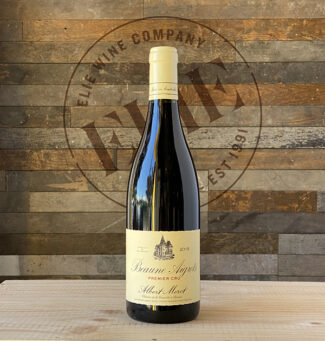 Beaune Premier Cru “Aigrots” – Morot 2015 ($50): Aigrots is another thorny 1er Cru, this one named for the holly shrubs in the west of Beaune where the terroir is typical of the finest Burgundies—calcareous clay, limestone and scree. The wine is expressive and bright, showing black cherry and raspberry up front with a slightly earthy undertone; moderate spice, mostly cinnamon and cola, which warms the mid-palate and leads to a clean, acidic finish filled with silky tannins.
Beaune Premier Cru “Aigrots” – Morot 2015 ($50): Aigrots is another thorny 1er Cru, this one named for the holly shrubs in the west of Beaune where the terroir is typical of the finest Burgundies—calcareous clay, limestone and scree. The wine is expressive and bright, showing black cherry and raspberry up front with a slightly earthy undertone; moderate spice, mostly cinnamon and cola, which warms the mid-palate and leads to a clean, acidic finish filled with silky tannins.
• • • • NORTH • • • •
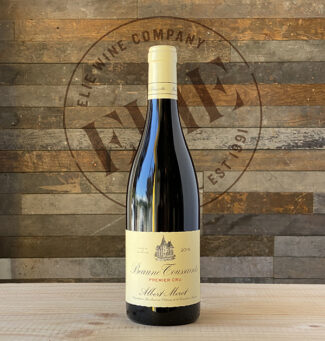 Beaune Premier Cru “Toussaints” – Morot 2016 ($49): More from Morot! Les Toussaints, means ‘all saints’ and lies in the northern sector of Beaune surrounded by some of Beaune’s larger and better-known Premier Crus, including Grèves, Bressandes and Cents-Vignes. Wines from the north tend to be fresher and more elegant than those from the south; this one shows notes of macerating black cherries mingled with rose-petals, lychee and spices accented by chocolate. The structure is powerful and rounded and the finish is satisfyingly long.
Beaune Premier Cru “Toussaints” – Morot 2016 ($49): More from Morot! Les Toussaints, means ‘all saints’ and lies in the northern sector of Beaune surrounded by some of Beaune’s larger and better-known Premier Crus, including Grèves, Bressandes and Cents-Vignes. Wines from the north tend to be fresher and more elegant than those from the south; this one shows notes of macerating black cherries mingled with rose-petals, lychee and spices accented by chocolate. The structure is powerful and rounded and the finish is satisfyingly long.
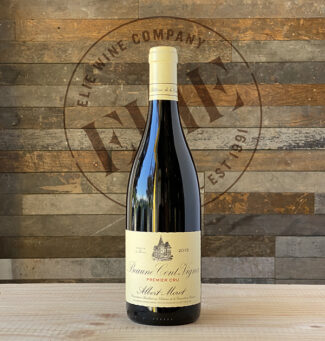 Beaune Premier Cru “Cent-Vignes” – Morot 2015 ($50): This Morot selection hails from the base of the Beaune hillsides, where the lightweight, sandy-textured is typical of lower vineyards where there is an accumulation of scree. The wine is medium-bodied and aromatic; the vividness of the nose is outstanding, and the on the palate, the fruit tends toward the red side of the spectrum, with tart cherry and wild raspberry along with a soil-driven earthiness.
Beaune Premier Cru “Cent-Vignes” – Morot 2015 ($50): This Morot selection hails from the base of the Beaune hillsides, where the lightweight, sandy-textured is typical of lower vineyards where there is an accumulation of scree. The wine is medium-bodied and aromatic; the vividness of the nose is outstanding, and the on the palate, the fruit tends toward the red side of the spectrum, with tart cherry and wild raspberry along with a soil-driven earthiness.
Domaine Rapet
The family estate of Rapet dates to 1765; today, the domain’s 35 acres of vines stretch across the villages of Pernand-Vergelesses, Beaune, Savigny-lès-Beaune, Chorey-lès-Beaune and Aloxe-Corton. Current owner Vincent Rapet is known for a classical approach to winemaking, both in the field and in the cellar. Along with his wife Sylvette he oversees parcels in three Grand Crus, Corton-Charlemagne, Corton, and Corton Pougets, and nine in Premier Cru vineyards. His Pinot Noir-based wines see an average 15-day maceration period followed by maturation in 228-liter oak barriques, of which about 30% are new wood.
 Beaune Premier Cru “Clos du Roi” – Rapet 2014 ($46): Clos du Roi is a small vineyard, but without doubt one of the best plots in Beaune. Once owned by the dukes of Burgundy and highly favored at Versailles, the site enjoys a perfect south/south-easterly exposure. This produces wines with sinew, rich and flirtatious with flavors of glacé cherries, crushed stone, licorice and mint. A friendly mouthfeel with sweet oak and austere minerality to rein it in.
Beaune Premier Cru “Clos du Roi” – Rapet 2014 ($46): Clos du Roi is a small vineyard, but without doubt one of the best plots in Beaune. Once owned by the dukes of Burgundy and highly favored at Versailles, the site enjoys a perfect south/south-easterly exposure. This produces wines with sinew, rich and flirtatious with flavors of glacé cherries, crushed stone, licorice and mint. A friendly mouthfeel with sweet oak and austere minerality to rein it in.
Domaine Paul Pernot
Paul Pernot’s grandfather was a négociant in Puligny and the fifteen acres he owned had been in the family for over two centuries. Ironically, the ground was largely unsuited to vines—at least, until the advent of modern technology (tractors) allowed the hard limestone surface rock to be worked. Founded in 1959, Domaine Paul Pernot proceeded to do exactly that, and today, 65% of his property is found within the commune of Puligny-Montrachet, including plots in Les Folatières, Les Pucelles, Clos de la Garenne and Champ Canet, and two Grand Cru parcels: Bienvenues Bâtard-Montrachet and Bâtard-Montrachet. As such, he is one of the top growers in Puligny.
 Beaune Lieu-dit “Clos du Dessus des Marconnets” Monopole – Pernot 2015 ($49): Among the 35% of Pernot land not in Puligny, Les Marconnets sits on the east-facing slope of Mont Battois hill in the southern part of the Savigny-lès-Beaune. The wine is round and racy, showing a nice brick rim in the glass behind a pungent nose of plum and truffle and a fragrant herbal thread that winds through. A brilliant example of the lieu-dit, with floral high tones, mineral purity and a vibrant, beautifully integrated tannic structure.
Beaune Lieu-dit “Clos du Dessus des Marconnets” Monopole – Pernot 2015 ($49): Among the 35% of Pernot land not in Puligny, Les Marconnets sits on the east-facing slope of Mont Battois hill in the southern part of the Savigny-lès-Beaune. The wine is round and racy, showing a nice brick rim in the glass behind a pungent nose of plum and truffle and a fragrant herbal thread that winds through. A brilliant example of the lieu-dit, with floral high tones, mineral purity and a vibrant, beautifully integrated tannic structure.
- - -
Posted on 2021.06.21 in France, Burgundy | Read more...
Featured Wines
- Notebook: A’Boudt Town
- Saturday Sips Wines
- Saturday Sips Review Club
- The Champagne Society
- Wine-Aid Packages
Wine Regions
Grape Varieties
Aglianico, Albarino, Albarín Tinto, Alicante Bouschet, Aligote, Altesse, Arbanne, Arcos, Auxerrois, Barbarossa, Beaune, Biancu Gentile, Bonarda, bourboulenc, Cabernet Sauvignon, Calvi, Carcajolu-Neru, Chenin Blanc, Cinsault, Clairette, Cortese, Corvinone, Cot, Counoise, Dolcetto, Erbamat, Fiano, folle Blanche, Fumin, Gamay, Garganega, Garnacha Tintorera, Godello, Graciano, Grenache, Grenache Blanc, Grolleau, Groppello, Jacquère, Juan Garcia, Lladoner Pelut, Macabeo, Maconnais, Malbec, Malvasia, manseng, Marcelan, Marsanne, Marselan, Marzemino, Melon de Bourgogne, Mencía, Merlot, Montepulciano, Montònega, Moscatell, Mourv, Mourvèdre, Muscadelle, Muscat, Natural, Nebbiolo, Nero d'Avola, Niellucciu, Palomino, Parellada, Patrimonio, Pecorino, Pedro Ximénez, Persan, Petit Meslier, Pineau d'Aunis, Pinot Auxerrois, Pinot Blanc, Pinot Gris, Pinot Meunier, Pinot Noir, Pouilly Fuisse, Pouilly Loche, Riesling, Rousanne, Sagrantino, Sangiovese, Sauvignon, Sciacarellu, Semillon, Serine, Sumoll, Tempranillo, Teroldego, Timorasso, Trebbiano Valtenesi, Treixadura, trepat, Trousseau, Ugni Blanc, Vermentino, Viognier, Viura, Xarel-loWines & Events by Date
- September 2025
- August 2025
- July 2025
- June 2025
- May 2025
- April 2025
- March 2025
- February 2025
- January 2025
- December 2024
- November 2024
- October 2024
- September 2024
- August 2024
- July 2024
- June 2024
- May 2024
- April 2024
- March 2024
- February 2024
- January 2024
- December 2023
- November 2023
- October 2023
- September 2023
- August 2023
- July 2023
- June 2023
- May 2023
- April 2023
- March 2023
- February 2023
- January 2023
- December 2022
- November 2022
- October 2022
- September 2022
- August 2022
- July 2022
- June 2022
- May 2022
- April 2022
- March 2022
- February 2022
- January 2022
- December 2021
- November 2021
- October 2021
- September 2021
- August 2021
- July 2021
- June 2021
- May 2021
- April 2021
- March 2021
- February 2021
- January 2021
- December 2020
- November 2020
- October 2020
- September 2020
- August 2020
- July 2020
- June 2020
- May 2020
- April 2020
- March 2020
- February 2020
- January 2020
- December 2019
- November 2019
- October 2019
- September 2019
- August 2019
- July 2019
- June 2019
- May 2019
- April 2019
- March 2019
- February 2019
- January 2019
- December 2018
- November 2018
- October 2018
- September 2018
- August 2018
- July 2018
- June 2018
- May 2018
- April 2018
- March 2018
- February 2018
- January 2018
- December 2017
- November 2017
- October 2017
- September 2017
- August 2017
- July 2017
- June 2017
- May 2017
- April 2017
- March 2017
- February 2017
- January 2017
- December 2016
- November 2016
- October 2016
- September 2016
- August 2016
- July 2016
- June 2016
- May 2016
- April 2016
- March 2016
- February 2016
- January 2016
- December 2015
- November 2015
- October 2015
- September 2015
- August 2015
- July 2015
- June 2015
- May 2015
- April 2015
- March 2015
- February 2015
- January 2015
- December 2014
- November 2014
- October 2014
- September 2014
- August 2014
- July 2014
- June 2014
- April 2014
- March 2014
- February 2014
- January 2014
- December 2013
- November 2013
- October 2013
- September 2013
- August 2013
- July 2013
- June 2013
- May 2013
- April 2013
- March 2013
- February 2013
- January 2013
- December 2012
- November 2012
- October 2012

